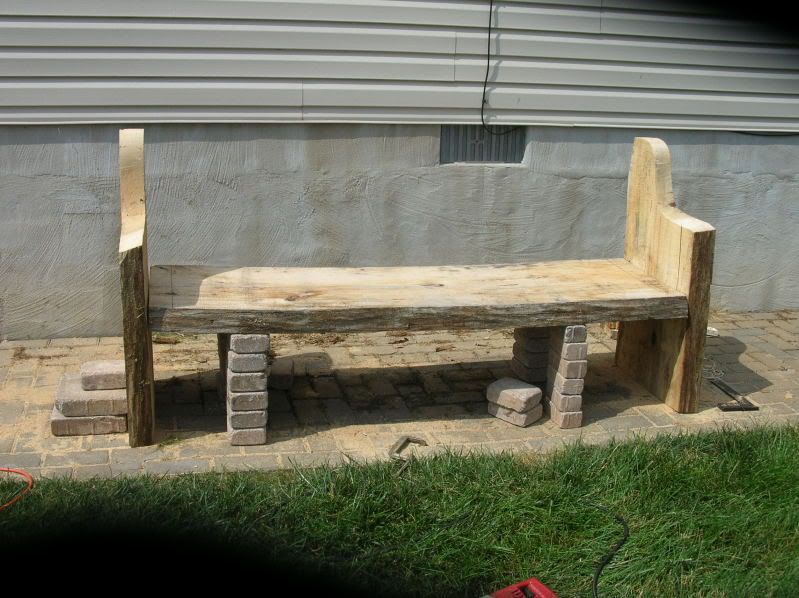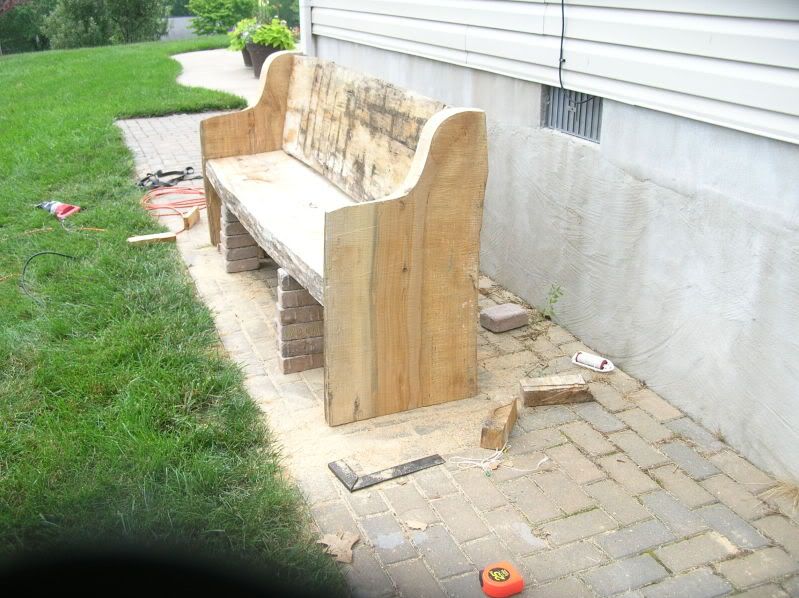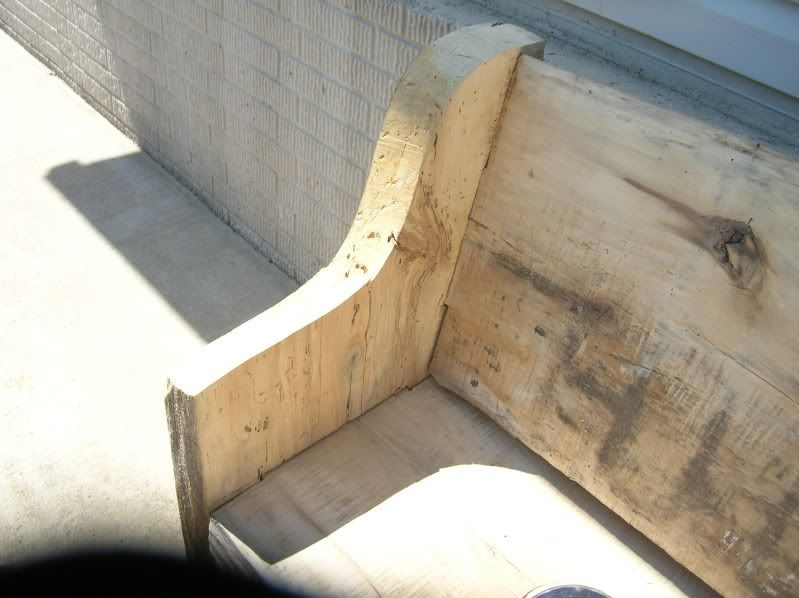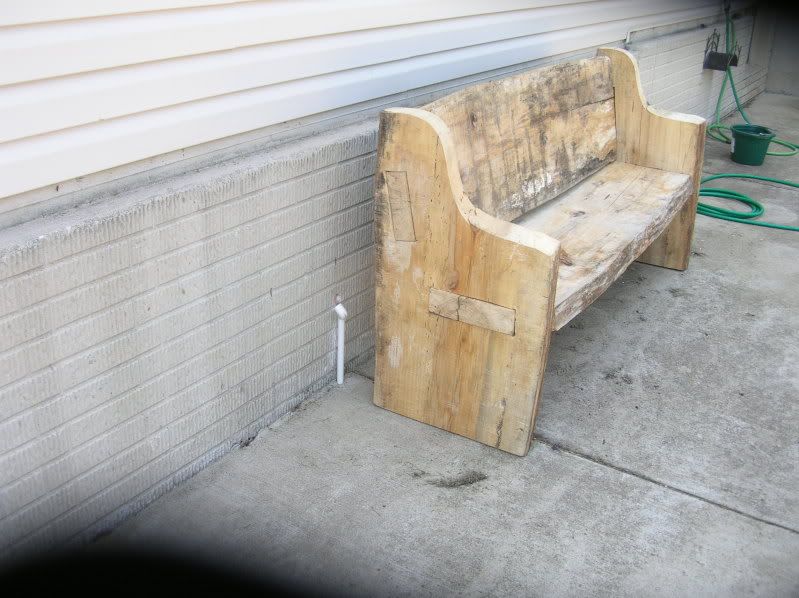I buy rustic furnishings. It's a thing my wife & I do together, an interest we share. Even though I build some of my own, I still shop & buy from others. Yes, some of those places DO get what they ask. And some do not. There are a few factors we consider before we buy something.
Is it original & creative?
Is it something we don't see all the time?
Is the wood quality and choice attractive, or just a normal slab?
Last but not least, "fit & finish". That gets broken down into it's own criteria:
Has the wood all been sanded flat & smooth finishing up with fine enough grit that there are no sanding lines or saw marks? Does the piece sit flat without teetering? Is it solid construction? Are there screws everywhere or did somebody take the time & show off some attractive joinery, such as mortise & tenon for example? How is the finish? Was it a can of clear that was gooped on or brushed on from a can in a hurry? Or was it nicely sanded, leveled, air bubbles removed, and polished? Oil is tough to beat, but nothing is better IMO than a well applied urethane. Ultimately it boils down to the craftsman himself/herself. Did somebody take pride & time in the project or did they slop it together for quick & maximum profit? Are they good at what they do or are they clueless & just doing something they enjoy with hopes of making money? Nothing wrong with doing something you enjoy but it doesn't mean you're good at it.
What we look for is quality & originality. We want something to find us, not us find it. We bought a mirror once for $900. It was nothing but a rotted hollow center mesquite that somebody slabbed just right so that it made a long oval ring shape. He routed out the back side so to inset the glass, and worked hard to give a very clean & smooth satin urethane finish. Essentially it was a rotted piece of wood with a mirror stuck in it. But the glass was cut to exactly fit the shape of the wood, and every detail about the build was meticulously executed. I never thought twice as I handed out 9 bills. That mirror hangs in our bedroom. Could I have built something similar? Yes, technically. But it would require time I don't have & the time it would take me to do that, I could make far more than $900. Not to mention, it was his idea, not mine. So it was a better choice to buy. Quality & tasteful creativity costs & I don't mind paying it.
Each craftsman has to decide what market they want to appeal to. Each buyer has to decide which market they will support. Slab furniture is a very broad craft. If you're very meticulous & well skilled, with a vibrant imagination, then you would probably do just fine & could charge accordingly. The problem comes when you charge prices that outweigh your product. Hope this helps from a buyer AND builder perspective.
I agree with your thoughts. I have a welder, and can stick things together, but my wife and I buy art made by a local artist who makes welded art out of "junk". He can do things with his artistic ability that I cannot, and this is what we value. Sure, it is $10 worth of scrap metal, but we highly value what he can do with it, not unlike a talented instumentalist or vocalist, and we are willing to pay for it. He often quotes a friends and family price, but I always give him full price, even if I have to tuck it in a drawer in his work shop somewhere. We believe in supporting him as an artist just as we would support any other career person we would have to pay well (doctor, attorney, teacher, etc)
Sure, you can see really high prices for slab furniture, but some people are willing to pay for it,... if they see value in it. For some, it may be the builder's name (James Krenov, Sam Maloof, Jimmy Carter etc), for some it may be the quality of the build, for some it may just be an inspiring piece, for some it may be the charisma of the builder, for some history (Abe Lincoln planted this tree), rarity of the wood, because Bill Gates has one like it, because it is larger than their neighbor's etc... I don't have any of these things to offer, so I'm not likely to get a high price for my work, but that does not stop me from making stuff for family and myself, or milling for friends who make nicer stuff than I. I'm also not too proud to buy something that I wish I could have made. This has become especially important to me in my unemployment... I actually find it easier to pay people for their services, knowing that I would want to be paid for mine. And if they do something that I cannot, who am I to argue about price? I cannot do it for less, or even at all!
Will I ever sell a piece of furniture for $20k? Not likely. Might I pay $2k for a piece of art? Probably. Did I pay $450 for a pair of hand planes made my James Krenov? Yes. It supported a man whose work has inspired me more than that $450 ever would. I guess I just suggest to people that they spend their money as they see fit, but they think about what that really means to them and their families. $900 for a beautiful, hand made mirror? I can see it. $50 for a Walmart mirror? Not for me. What you buy is a reflection of self. I can only hope to offer pieces that are that inspiring to others, but I'm not going to stop trying.
Schumann









